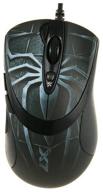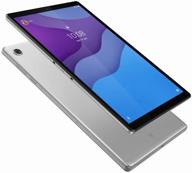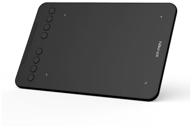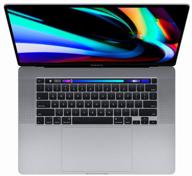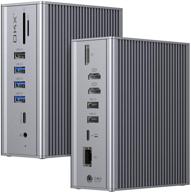Similar products
Connect Peripherals to Your Laptop
Adding peripherals like monitors, printers, and external hard drives to your laptop allows you to expand its capabilities. However, most laptops have a limited number of ports. This is where a docking station comes in handy.
Benefits of Using a Docking Station
- Converts one Thunderbolt 3 port into several ports
- Allows you to connect multiple peripherals using a single cable
- Provides faster file transfer speeds than traditional USB ports
- Charges your laptop while connected
How to Connect Peripherals
Follow these steps to connect peripherals to your laptop using a Thunderbolt 3 docking station:
- Plug the docking station into your laptop's Thunderbolt 3 port using the included cable.
- Connect your peripherals like monitors, printers, and external storage to the ports on the back of the docking station.
- Install any required driver software for the peripherals if needed.
- Use the docking station's cable to also charge your laptop battery.
With a simple one cable connection, you can now use multiple peripherals with your laptop at once. The Thunderbolt 3 docking station makes it easy to expand your productivity.
Use the Docking Station with Different Computers
A key benefit of a Thunderbolt 3 docking station is the ability to use it with different laptops or computers, not just one. With the right setup, you can seamlessly switch between using the docking station with a work laptop or personal computer.
Compatible Computers
To use the docking station with different computers, they must have:
- A Thunderbolt 3 port for connecting the docking station
- The proper drivers installed for any devices you want to connect
- Supported OS like Windows 10 or MacOS
Using the Dock
- Disconnect the docking station from your current computer.
- Connect the docking station to your secondary computer using the Thunderbolt 3 cable.
- Power on the computer and log in. The connected peripherals should be detected.
- Switch input sources on devices like monitors if needed.
Now your second computer can access all the devices connected to the docking station like external displays, networked printers, external storage drives, and more. Switching computers is quick and easy.
With the right Thunderbolt 3 laptops or computers, one docking station can increase the productivity of your entire workforce. No specialized hardware restrictions need to be placed on the connected peripherals.
Another interesting products
Charge Your Laptop Through the Docking Station
One of the handy features of a Thunderbolt 3 docking station is the ability to charge your laptop through the same cable used to connect devices. This avoids the need for separate power bricks and cables.
How It Works
Thunderbolt 3 ports support both data transfer and power delivery. With a 60W or higher power supply, the docking station can charge laptops at up to 85W with the following steps:
- Connect the docking station to your laptop's Thunderbolt 3 port using the included cable.
- Plug the docking station power supply into an outlet.
- The dock will now charge your laptop battery in addition to any connected devices.
Benefits
- Avoid carrying separate charging bricks when traveling
- Power your laptop from a single cable
- Top off your battery while using all your peripherals
- No need to plug and unplug a charger when docking or undocking
With up to 85W of power delivery, even power-hungry laptops like the MacBook Pro 16-inch can be charged while connected to the Thunderbolt dock. Keep your productivity high with a fully charged battery.
Extend Displays with the Docking Station
One great way to improve productivity is connecting additional displays to your laptop. A Thunderbolt 3 docking station makes this easy with multiple video ports.
Video Ports
Look for a docking station with ports like:
- HDMI - Supports 4K monitors
- DisplayPort - Also supports 4K displays
- VGA - For legacy monitor connections
Setting Up Displays
- Connect monitors to the docking station video ports.
- Attach the dock to your laptop via Thunderbolt 3.
- Turn on the monitors and select the correct video input.
- On your laptop, adjust display settings to extend or mirror screens.
With the variety of video outputs on the docking station, you can connect HDMI, DisplayPort, or VGA monitors in any configuration wanted. Both Windows and Mac laptops support dual, triple, or even quad monitor setups with a powerful Thunderbolt 3 dock.
Benefits
- Increase productivity with more screen space
- Mirror your main display onto a larger monitor
- Use extended desktop mode for multitasking
- Connect up to three 4K monitors for ultra HD resolution
Transfer Data Quickly Using the Docking Station
In addition to peripherals and display connections, a Thunderbolt 3 docking station provides quick data transfer speeds to external drives or networks.
Thunderbolt 3 Benefits
- 40Gbps bandwidth, or 8x faster than USB 3
- Daisy chain up to 6 devices
- Connect up to two 4K displays
This allows you to transfer even large files in seconds instead of minutes. For example, a 20GB file transfers in just 39 seconds versus over 5 minutes on USB 3.
Transferring Files
To benefit from the fast speeds, connect devices like external hard drives and flash storage directly to the Thunderbolt 3 ports on the back of the docking station. Then transfer files normally from your computer.
Network attached storage and docks like the Belkin Thunderbolt 3 Express Dock offer 2.5GbE ports for faster network file transfers as well.
Other Perks
- Stream 4K video to thunderbolt displays
- Backup large files almost instantly
- Game or work seamlessly with ultra fast speeds
With Thunderbolt 3 and the right docking station, you don't have to wait around for files to transfer anymore. It takes connections and productivity to the next level.
Troubleshoot Docking Station Connectivity Issues
If you experience issues with devices not connecting properly through your Thunderbolt 3 docking station, there are some troubleshooting steps you can take.
Check Cabling
Make sure all cables are fully inserted into the correct ports on both the docking station and your computer. Try disconnecting and reconnecting the Thunderbolt 3 cable or swapping to a different certified cable.
Update Drivers
Go to the manufacturer's website for both your computer and the docking station. Download and install the latest drivers, firmware, BIOS, and Thunderbolt software to ensure compatibility.
Change Thunderbolt Port
Some laptops have more than one Thunderbolt 3 port. Try connecting your dock to each port and restarting to see if that resolves any issues.
Adjust Display Settings
If displays are not being detected properly, check your OS display settings. Make sure extended desktop or mirroring is enabled if attempting a multi-monitor setup.
Disconnect Peripherals
Unplug all peripherals from the docking station and directly connect devices one at a time to narrow down any potential hardware conflicts.
Contact Support
If you still can't get devices to connect as expected, contact the manufacturer's tech support with details on your setup. They can help troubleshoot further or initiate a replacement if needed.
With some systematic troubleshooting, you should be able to resolve any connectivity issues with your Thunderbolt 3 docking station.
What is the Benefit of Amazon Prime When Buying a Thunderbolt 3 Docking Station?
Purchasing tech accessories like a versatile Thunderbolt 3 dock can be made easier with an Amazon Prime membership. Here are some of the key benefits Prime provides when buying this 7-in-1 USB-C hub:
Free Two-Day Shipping
Prime members get free two-day shipping on eligible items. Instead of having to wait a week or longer for standard shipping, you can get the docking station delivered quickly with Prime.
Free One-Day Delivery
For an additional fee, Prime members can often get one-day shipping on items. This ensures you get your Thunderbolt 3 dock even faster to immediately improve workstation productivity.
Free Returns
Prime provides free returns on eligible items within 30 days of receipt. If you end up needing a different docking station, you can easily return or exchange it.
Amazon Prime Try Before You Buy
Select products are eligible for Prime members to try out before buying. This allows you to test if the docking station will suit your needs.
Overall, the fast free shipping, easy returns, and try before you buy perks make Amazon Prime a great way to purchase tech accessories like a Thunderbolt 3 docking station. Get the convenience of Prime to enhance your connectivity and productivity.
Top products in 🔌 Docking Stations
How To Connect Thunderbolt 3 Docking Station To A Laptop?
To connect the Thunderbolt 3 Docking Station to a laptop, follow these steps:
- Plug the Thunderbolt 3 cable into the Thunderbolt 3 port on your laptop.
- Turn on the Dock by pressing and holding the power button.
- Wait for the Dock to be recognized by your laptop.
- Connect your peripherals to the Dock, such as HDMI or DisplayPort monitors, controllers, network devices, headphones, and more components.
- If necessary, install any drivers or software required for your peripherals to work with the Dock.
- For more installation flexibility, you can use mounting brackets that are specifically designed for the Dock to mount it to a desk, wall, or other surface.
- If you require more security, the built-in K-Slot uses a traditional laptop combination cable lock to ensure your Dock stays put.
What Is The Difference Between Thunderbolt 3 And USB-C Docking Stations?
Thunderbolt 3 and USB-C docking stations have some similarities, but there are also some key differences between them. Here are some of the main differences:
USB-C Docking Stations
Thunderbolt 3 Docking Stations
In summary, Thunderbolt 3 docking stations offer higher data transfer speeds, more display connectivity, and more power delivery than USB-C docking stations. However, USB-C docking stations are more affordable, smaller in size, and can be used with most laptops and devices that have a USB-C port. Ultimately, the choice between Thunderbolt 3 and USB-C docking stations depends on your specific needs and budget.
Can USB-C Docking Stations Charge Laptops?
Yes, USB-C docking stations can charge laptops, but the charging capability depends on the specific docking station and the laptop. Some USB-C docking stations support Power Delivery (PD) charging, which can provide up to 100W of power to charge a laptop. However, not all USB-C laptops support PD charging, and some may require a specific wattage or voltage to charge properly. It's important to check the specifications of both the laptop and the docking station to ensure compatibility. Some examples of USB-C docking stations that support laptop charging include the Plugable USB C Docking Station with Charging, the Plugable Triple Display Docking Station with Laptop Charging, and the Lention USB-C Universal Docking Station.
What Is The Maximum Power Output Of USB-C Docking Stations For Laptop Charging?
The maximum power output of USB-C docking stations for laptop charging varies depending on the specific docking station and the laptop. However, most high-performing laptops require 65W or 85W of power delivery (PD) . Many USB-C docking stations support Power Delivery (PD) charging, which can provide up to 100W of power to charge a laptop. However, not all USB-C laptops support PD charging, and some may require a specific wattage or voltage to charge properly. It's important to check the specifications of both the laptop and the docking station to ensure compatibility. Some USB-C docking stations that support laptop charging include the Plugable USB C Docking Station with Charging, Compatible with Thunderbolt, the Plugable Triple Display Docking Station with Laptop Charging, and the Lention USB-C Universal Docking Station.








